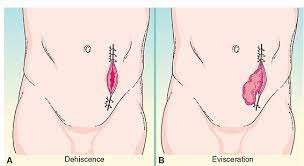A nurse is caring for a client who is 1-day post-total hip replacement surgery. Assessment findings are as follows.
Assessment
- Vital Signs BP 112/68 mmHg
- Heart rate 75 beats/min. Respirations 18 breaths/min 02 saturation 90%, room air Surgical site clean, dry, intact
- Lung sounds clear upper lobes, diminished lower lobes.
- Pain 2/10
Which action by the nurse is most appropriate at this time?
Administer the antibiotic earlier than scheduled.
Administer pain medication.
Have the client use the incentive spirometer.
Change the dressing over the wound.
The Correct Answer is C
The assessment findings indicate that the client has diminished lung sounds in the lower lobes, suggesting potential postoperative atelectasis or decreased air movement in the lungs. Using an incentive spirometer can help improve lung expansion and prevent respiratory complications such as pneumonia. It is important to address this issue promptly to prevent further deterioration of lung function.
Administering pain medication may be necessary depending on the client's level of pain, but addressing the respiratory issue takes priority in this situation.
Administering the antibiotic earlier than scheduled or changing the dressing over the wound may not be indicated based on the provided assessment findings.
Therefore, having the client use the incentive spirometer is the most appropriate action at this time to promote optimal lung function and prevent respiratory complications.
Nursing Test Bank
Naxlex Comprehensive Predictor Exams
Related Questions
Correct Answer is A
Explanation
Glipizide is an oral antidiabetic medication commonly prescribed to manage type 2 diabetes. It works by stimulating the release of insulin from the pancreas, which helps lower blood glucose levels. However, there is a risk of hypoglycemia (low blood sugar) with the use of Glipizide.
It is crucial for the client to be aware of the signs and symptoms of hypoglycemia so that they can take appropriate action if their blood sugar drops too low. These symptoms may include sweating, trembling, dizziness, confusion, weakness, and hunger. By recognizing these signs, the client can promptly address hypoglycemia by consuming a source of fast-acting glucose, such as fruit juice or glucose tablets, as instructed by their healthcare provider.
Correct Answer is A
Explanation
Wound evisceration refers to the protrusion of internal organs or tissues through an open wound. In this case, with the separation of the wound and extrusion of the intestine through the opening, it is a clear indication of wound evisceration. It is a surgical emergency that requires immediate medical attention.
Wound dehiscence, on the other hand, refers to the separation or opening of a previously closed surgical incision or wound. It does not involve the extrusion of internal organs or tissues.

Wound infection refers to the presence of infectious microorganisms in the wound, leading to inflammation and other signs of infection.
Wound tunneling refers to the formation of narrow channels or tunnels within the wound, often caused by improper wound healing or infection.
Whether you are a student looking to ace your exams or a practicing nurse seeking to enhance your expertise , our nursing education contents will empower you with the confidence and competence to make a difference in the lives of patients and become a respected leader in the healthcare field.
Visit Naxlex, invest in your future and unlock endless possibilities with our unparalleled nursing education contents today
Report Wrong Answer on the Current Question
Do you disagree with the answer? If yes, what is your expected answer? Explain.
Kindly be descriptive with the issue you are facing.
